Assistive technologies, including orthotic devices, for the management of contractures in adults after a stroke
- PMID: 39312271
- PMCID: PMC11418973
- DOI: 10.1002/14651858.CD010779.pub2
Assistive technologies, including orthotic devices, for the management of contractures in adults after a stroke
Abstract
Background: Contractures (reduced range of motion and increased stiffness of a joint) are a frequent complication of stroke. Contractures can interfere with function and cause cosmetic and hygiene problems. Preventing and managing contractures might improve rehabilitation and recovery after stroke.
Objectives: To assess the effects of assistive technologies for the management of contractures in adults after a stroke.
Search methods: We searched CENTRAL, MEDLINE, Embase, five other databases, and three trials registers in May 2022. We also searched for reference lists of relevant studies, contacted experts in the field, and ran forward citation searches.
Selection criteria: Randomised controlled studies (RCTs) that used electrical, mechanical, or electromechanical devices to manage contractures in adults with stroke were eligible for inclusion in this review. We planned to include studies that compared assistive technologies against no treatment, routine therapy, or another assistive technology.
Data collection and analysis: Three review authors (working in pairs) selected all studies, extracted data, and assessed risk of bias. The primary outcomes were passive joint range of motion (PROM) with and without standardised force, and indirect measures of PROM. The secondary outcomes included hygiene. We also wanted to evaluate the adverse effects of assistive technology. Effects were expressed as mean differences (MDs) or standardised mean differences (SMDs) with 95% confidence intervals (CIs).
Main results: Seven studies fulfilled the inclusion criteria. Five of these were meta-analysed; they included 252 adults treated in acute and subacute rehabilitation settings. All studies compared assistive technology with routine therapy; one study also compared assistive technology with no treatment, but we were unable to obtain separate data for stroke participants. The assistive technologies used in the studies were electrical stimulation, splinting, positioning using a hinged board, and active repetitive motor training using a non-robotic device with electrical stimulation. Only one study applied stretching to end range. Treatment duration ranged from four to 12 weeks. The overall risk of bias was high for all studies. We are uncertain whether: • electrical stimulation to wrist extensors improves passive range of wrist extension (MD -7.30°, 95% CI -18.26° to 3.66°; 1 study, 81 participants; very low-certainty evidence); • a non-robotic device with electrical stimulation to shoulder flexors improves passive range of shoulder flexion (MD -9.00°, 95% CI -25.71° to 7.71°; 1 study; 50 participants; very low-certainty evidence); • assistive technology improves passive range of wrist extension with standardised force (SMD -0.05, 95% CI -0.39 to 0.29; four studies, 145 participants; very low-certainty evidence): • a non-robotic device with electrical stimulation to elbow extensors improves passive range of elbow extension (MD 0.41°, 95% CI -0.15° to 0.97°; 1 study, 50 participants; very low-certainty evidence). One study reported the adverse outcome of pain when using a hinged board to apply stretch to wrist and finger flexors, and another study reported skin breakdown when using a thumb splint. No studies reported hygiene or indirect measures of PROM.
Authors' conclusions: Only seven small RCTs met the eligibility criteria of this review, and all provided very low-certainty evidence. Consequently, we cannot draw firm conclusions on the effects of assistive technology compared with routine therapy or no therapy. It was also difficult to confirm whether there is a risk of harm associated with treatment using assistive technology. Future studies should apply adequate treatment intensity (i.e. magnitude and the duration of stretch) and use valid and reliable outcome measures. Such studies might better identify the role of assistive technology in the management of contractures in adults after a stroke.
Copyright © 2024 The Cochrane Collaboration. Published by John Wiley & Sons, Ltd.
Conflict of interest statement
RM: currently working as Director of clinical Services, Hope Rehab limited; "As part of my job role, I supervise therapists who use splinting, casting, tilt table as part of treatment programme." Previously secured small grant funding from Posture and Mobility group to conduct qualitative study related to 24‐hour posture management. VD: employed as a neurophysiotherapist, University Hospitals of North Midlands NHS trust; "As a part of my job I routinely use Assistive technology to treat patients." PS: none known SF: none known Anand Pandyan:
Grants and contracts
National Institute for Health Research (NIHR) under its Research for Patient Benefit Programme (PB‐PG‐1013‐32034), Dept of Health (grant paid to institution; project completed)
National Institute for Health Research (NIHR) under its Research for Patient Benefit Programme (PB‐PG‐0808‐16319), Dept of Health (grant paid to institution; project completed)
Payment or honoraria for lectures, presentations, speakers bureaus, manuscript writing, or educational events
Unrestricted support from Biometrics Ltd & Allergan, Industry. Unrelated to this review (funds paid to institution)
Honoraria (Allergan, Merz and IPSEN), Industry. Unrelated to this review (funds paid to review author).
Leadership or other fiduciary role in other board, society, committee, or advocacy group
Associate Non‐Executive Director, Royal Wolverhampton NHS Trust (funds paid to review author)
President Elect, SRR (funds paid to review author)
Involvement in eligible studies
Action Medical Research and Barnwood House Trust (grant number: AP0993)
National Institute for Health Research (NIHR) under its Program Grants for Applied Research Program (grant no. RP‐PG‐0707‐10012)
National Institute for Health Research (Research for Patient Benefit Programme; ref: PB‐PG‐1013‐32034)
Anand Pandyan was a co‐author on one of the papers (Malhotra 2013) used to inform the review. He was not part of the data extraction processes.
Figures
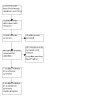





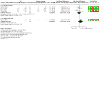

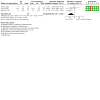
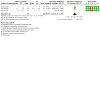
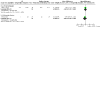

Update of
References
References to studies included in this review
Harvey 2006 {published data only (unpublished sought but not used)}
-
- Harvey L, Jong I, Goehl G, Mardwedel S. Twelve weeks of nightly stretch does not reduce thumb web-space contractures in people with a neurological condition: a randomised controlled trial. Australian Journal of Physiotherapy 2006;52(4):251-8. - PubMed
Horsley 2019 {published data only}
-
- Horsley S, Lannin NA, Hayward SK, Herbert RD. Additional early active repetitive motor training did not prevent contracture in adults receiving task-specific upper limb training after stroke: a randomised trial. Journal of Physiotherapy 2019;65:88-94. - PubMed
Lannin 2003 {published data only}
-
- Lannin NA, Horsley SA, Herbert R, McCluskey A, Cusick A. Splinting the hand in the functional position after brain impairment: a randomized, controlled trial. Archives of Physical Medicine and Rehabilitation 2003;84:297-302. - PubMed
Lannin 2007 {published data only}
-
- Lannin NA, Cusick A, McCluskey A, Herbert RD. Effects of splinting on wrist contracture after stroke: a randomised controlled trial. Stroke 2007;38(1):111-6. - PubMed
Leung 2012 {published data only}
-
- Leung J, Harvey LA, Moseley AM, Tse C, Bryant J, Wyndham S, et al. Electrical stimulation and splinting were not clearly more effective than splinting alone for contracture management after acquired brain injury: a randomised trial. Journal of Physiotherapy 2012;58:231-40. - PubMed
Malhotra 2013 {published data only}
-
- Malhotra S, Rosewilliam S, Hermens H, Roffe C, Jones P, Pandyan A. A randomized controlled trial of surface neuromuscular electrical stimulation applied early after acute stroke: effects on wrist pain, spasticity and contractures. Clinical Rehabilitation 2013;27(7):579-90. - PubMed
Turton 2005 {published data only (unpublished sought but not used)}
-
- Turton AJ, Britton E. A pilot randomized controlled trial of a daily muscle stretch regime to prevent contractures in the arm after stroke. Clinical Rehabilitation 2005;19:600-12. - PubMed
References to studies excluded from this review
Arpa 2019 {published data only}
-
- Selcan Arpa, Suheda Ozcakir. Does electromyographic biofeedback improve exercise effects in hemiplegic patients? A pilot randomized controlled trial. Journal of Rehabilitation Medicine January 2019;51:109-112. - PubMed
Baricich 2019 {published data only}
-
- Alessio Baricich, Alessandro Picelli, Stefano Carda, Nicola Smania, Carlo Cisari, Andrea Santamato, Alessandro de Sire, Marco Invernizzi. Electrical stimulation of antagonist muscles after botulinum toxin type A for post-stroke spastic equinus foot. A randomized single-blind pilot study. Annals of Physical and Rehabilitation Medicine 2019;62:214-219. - PubMed
Basaran 2012 {published data only}
-
- Basaran A, Emre U, Karadavut KI, Balbaloglu O, Bulmus N. Hand splinting for post stroke spasticity: a randomised controlled trial. Topics in Stroke Rehabilitation 2012;19:329-37. - PubMed
Bowman 1979 {published data only}
-
- Bowman BR, Baker LL, Waters RL. Positional feedback and electrical stimulation: an automated treatment for the hemiplegic wrist. Archives of Physical Medicine and Rehabilitation 1979;60:497-502. - PubMed
De Jong 2006 {published data only}
-
- De Jong LD, Nieuwboer A, Aufdemkampe G. Contracture preventive positioning of the hemiplegic arm in subacute stroke patients: a pilot randomized controlled trial. Clinical Rehabilitation 2006;20(8):656-67. - PubMed
De Jong 2013 {published data only}
-
- De Jong LD, Dijkstra PU, Gerritsen J, Geurts AC, Postema K. Combined arm stretch positioning and neuromuscular electrical stimulation during rehabilitation does not improve range of motion, shoulder pain or function in patients after stroke: a randomised trial. Journal of Physiotherapy 2013;59(4):245-54. - PubMed
DeMeyer 2015 {published data only}
-
- DeMeyer L, Brown M, Adams A. Effectiveness of a night positioning programme on ankle range of motion in patients after hemiparesis: a prospective randomized controlled pilot study. Journal of Rehabilitation Medicine 2015;47:873-7. - PubMed
Franceschini 2020 {published data only}
-
- Marco Franceschini, Stefano Mazzoleni, Michela Goffredo, Sanaz Pournajaf, Daniele Galafate, Simone Criscuolo, Maurizio Agosti, Federico Posteraro. Upper limb robot assisted rehabilitation versus physical therapy on subacute stroke patients: A follow-up study. Journal of Bodywork & Movement Therapies 2020;24:194-198. - PubMed
Gürcan 2015 {published data only}
-
- Gürcan A, Selçuk B, Önder B, Akyüz M, Akbal Yavuz A. Evaluation of clinical and electrophysiological effects of electrical stimulation on spasticity of plantar flexor muscles in patients with stroke. Turkish Journal of Physical Medicine and Rehabilitation 2015;61:307-13.
Horsley 2007 {published data only}
-
- Horsley SA, Herbert RD, Ada L. Four weeks of daily stretch has little or no effect on wrist contracture after stroke: a randomised controlled trial. Australian Journal of Physiotherapy 2007;53(4):239-45. - PubMed
Hussain 2013 {published data only}
-
- Hussain T, Sosorburam T, Mohammad H, Shu LY, Xiang C, Zahir J, et al. The effect of transcutaneous electrical nerve stimulation (TENS) combined with bobath on post stroke spasticity. A randomized controlled study. Journal of University Medical and Dental College 2013;4(1):22-9.
Park 2018 {published data only}
-
- Park D, Lee J, Kang T, Cynn H. Effects of a 4-Week Self-Ankle Mobilization with Movement Intervention on Ankle Passive Range of Motion, Balance, Gait, and Activities of Daily Living in Patients with Chronic Stroke: A Randomized Controlled Study.. Journal of Stroke and Cerebrovascular Diseases December 2018;27(12):3451-3459. - PubMed
Popovic 2004 {published data only}
-
- Popovic DB, Popovic MB, Sinkjaer T, Stefanovic A, Schwirtlich L. Therapy of paretic arm in hemiplegic subjects augmented with a neural prosthesis: a cross-over study. Canadian Journal of Physiology and Pharmacology 2004;82(8-9):749-56. - PubMed
Pradines 2019 {published data only}
-
- Maud Pradines, Mouna Ghedira, Raphaël Portero, Ingrid Masson, Christina Marciniak, Dawn Hicklin, et al. Ultrasound Structural Changes in Triceps Surae After a 1-Year Daily Self-stretch Program: A Prospective Randomized Controlled Trial in Chronic Hemiparesis. Neurorehabilitation and Neural Repair 2019;33(4):245-259. - PubMed
Robinson 2008 {published data only}
-
- Robinson W, Smith R, Aung Ohmar and Louise Ada. No difference between wearing a night splint and standing on a tilt table in preventing ankle contracture early after stroke: a randomised trial. Australian Journal of Physiotherapy 2008;54:33-38. - PubMed
-
- Wendy Robinson, Robyn Smith, Ohnmar Aung and Louise Ada. No difference between wearing a night splint and standing on a tilt table in preventing ankle contracture early after stroke: a randomised trial. Australian Journal of Physiotherapy 2008;54:33-38. - PubMed
Sung 2016 {published data only}
Takeuchi 2015 {published data only}
Waldman 2013 {published data only}
-
- Waldman G, Yang CY, Ren Y, Liu L, Guo X, Harvey R, Roth E, et al. Effects of robot-guided passive stretching and active movement training of ankle and mobility impairments in stroke. NeuroRehabilitation 2013;32(3):625-34. - PubMed
Yoo 2018 {published data only}
-
- Dongyual Yoo, Younsun Son, Dae-Hee Kim, Kap-Ho Seo, Beom-Chan Lee. Technology Assisted Ankle Rehabilitation Improves Balance and Gait Performance in Stroke Survivors: A Randomized Controlled Study With 1-Month Follow-Up. IEEE transactions on neural systems and rehabilitation engineering December 2018;26(12):2315-2323. - PubMed
References to studies awaiting assessment
Lima 2008 {published data only}
-
- Lima MO, Pupio S Lima, Takeshi T, Regina-Ribeiro S, Tortoza C, Gomes-Lucareli J, et al. Effect of neuromuscular electrical stimulation and isotonic exercises in flexor and extensor muscles of knee of hemiplegic patients. Revista de Neurologia 2008;46(3):135-8. - PubMed
Motamedvaziri 2014 {published data only}
-
- Motamedvaziri P, Bahrpeyma F, Firoozabadi SM, Hatef B. Effect of low frequency rTMS on stiffness of joints of the upper limbs in hemiplegic patients. Scientific Journal of Kurdistan University of Medical Sciences 2014;19(2):103-13.
Sairong 2021 {published data only}
-
- Bao Sairong, Lin Lihua, Shan Sharui, Yang Xingping, Liu Chunlong. Effect of electrical deep muscle stimulate on muscle tone, elasticity, and stiffness of biceps brachii in stroke patients. Chinese Journal of Tissue Engineering Research 2021;25(20):3138-3143.
Sentandreu Mañó 2011 {published data only}
-
- Sentandreu Mañó T, Salom Terrádez JR, Tomás JM, Meléndez Moral JC, la Fuente Fernández T, Company José C. Electrical stimulation in the treatment of the spastic hemiplegic hand after stroke: a randomized study. Medicina Clinica 2011;137(7):297-301. - PubMed
Stoliarova 1989 {published data only}
-
- Stoliarova LG, Kadykov AS, Chernikova LA, Razinkina TP, Shvedkov VV. Prevention of contractures in post-stroke arthropathies. Zhurnal Nevropatologii i Psikhiatrii Imeni S.S. Korsakova 1989;89:63-5. - PubMed
Additional references
Ada 2006
-
- Ada L, O’Dwyer N, O’Neill E. Relation between spasticity, weakness and contracture of the elbow flexors and upper limb activity after stroke: an observational study. Disability and Rehabilitation 2006;28(13-14):891-7. - PubMed
Bhakta 2000
Bohannon 1987
-
- Bohannon RB, Smith MB. Interrater reliability of a modified Ashworth scale of muscle spasticity. Physical Therapy 1987;67(2):206. - PubMed
Botte 1988
-
- Botte MJ, Nickel VL, Akeson WH. Spasticity and contractures. Physiological aspects of formation. Clinical Orthopaedics 1988;233:7-11. - PubMed
Carda 2011
-
- Carda S, Invernizzi M, Baricich A, Cisari C. Casting, taping or stretching after botulinum toxin type A for spastic equinus foot: a single-blind randomized trial on adult stroke patients. Clinical Rehabilitation 2011;25(12):119-27. - PubMed
De Jong 2012
-
- De Jong LD, Dijkstra PU, Stewart RE, Postema K. Repeated measurements of arm joint passive range of motion after stroke: inter observer reliability and sources of variation. Physical Therapy 2012;92(8):1027-35. - PubMed
Dewald 1994
-
- Dewald JP, Given JD. Electrical stimulation and spasticity reduction. Fact or fiction? Physical Medicine and Rehabilitation: State of the Art Reviews 1994;8:507-22.
Domholdt 2005
-
- Domholdt E. Rehabilitation Research Principles and Applications. 3rd edition. St Louis: Elsevier Saunders, 2005.
Duncan 1987
-
- Duncan PW, Badke MB. Determinants of abnormal motor control. In: Duncan PW, Badke MB, editors(s). The Recovery of Motor Control. Chicago, IL: Year Book Medical Publishers, 1987:135-58.
Duong 2001
-
- Duong B, Low M, Moseley AM, Lee RY, Herbert RD. Time course of stress relaxation and recovery in human ankles. Clinical Biomechanics 2001;16:601-7. - PubMed
Elveru 1998
-
- Elveru RA. Goniometric reliability in a clinical setting. Subtalar and ankle joint measurements. Physical Therapy 1988;68(5):672-7. - PubMed
Farmer 2001
-
- Farmer SE, James M. Contractures in orthopaedic and neurological conditions: a review of causes and treatment. Disability and Rehabilitation 2001;10(23):549-58. - PubMed
Farmer 2014
-
- Farmer SE, Durairaj V, Swain I, Pandyan AD. Assistive technologies: can they contribute to rehabilitation of the upper limb after stroke? Archives of Physical Medicine and Rehabilitation 2014;95:968-85. - PubMed
Goldspink 1974
GRADEpro 2015 [Computer program]
-
- GRADEpro GDT [accessed prior to March 2024]. Hamilton (ON): McMaster University (developed by Evidence Prime), 2015. Available at gradepro.org.
Harburn 1993
-
- Harburn KL, Potter PJ. Spasticity and contractures. Physical Medicine and Rehabilitation 1993;7:113-32.
Hatano 1976
Higgins 2011
-
- Higgins JP, Altman, DG, Sterne JA, editor(s), on behalf of the Cochrane Statistical Methods Group and the Cochrane Bias Methods Group. Chapter 8: Assessing risk of bias in included studies. In: Higgins JP, Green S, editor(s). Cochrane Handbook for Systematic Reviews of Interventions Version 5.1.0 (updated March 2011). The Cochrane Collaboration, 2011. Available from training.cochrane.org/handbook/archive/v5.1.
Jamshed 2010
-
- Jamshed N, Schneider EL. Are joint contractures in patients with Alzheimer's disease preventable? Annals of Long Term Care 2010;18(8):26-33.
Katalinic 2010
King 1982
-
- King TI. Plaster splinting as a means of reducing elbow flexor spasticity: a case study. American Journal of Occupational Therapy 1982;36(10):671-3. - PubMed
Kwah 2012
-
- Kwah LK, Herbert RD, Harvey LA, Diong J, Clarke JL, Martin JH, et al. Passive mechanical properties of gastrocnemius muscles of people with ankle contracture after stroke. Archives of Physical Medicine and Rehabilitation 2012;93(7):1185-90. - PubMed
Lance 1980
-
- Lance JW, Feldman RG, Young RR, Koella WP. Spasticity: Disordered Motor Control. Chicago: Year Book, 1980.
Lannin 2011
-
- Lannin NA, Ada L. Neurorehabilitation splinting: theory and principles of clinical use. NeuroRehabilitation 2011;28:21-8. - PubMed
Liberati 2009
-
- Liberati A, Altman DG, Tetzlaff J, Mulrow C, Gøtzsche PC, Ioannidis JPA, et al. The PRISMA statement for reporting systematic reviews and meta-analyses of studies that evaluate health care interventions: explanation and elaboration. PLoS Medicine 2009;6(7):e1000100. [DOI: 10.1371/journal.pmed.1000100] - DOI - PMC - PubMed
Lieber 2010
-
- Lieber RL. Skeletal Muscle Structure Function & Plasticity - The Physiological Basis of Rehabilitation. 3rd revised edition. Philadelphia: Lippincott Williams and Wilkins, 2010.
MacKay‐Lyons 1989
-
- Marilyn Mackay-Lyons. Low-load, prolonged stretch in the treatment of elbow flexion contracture secondary to head trauma: a case report. Physical Therapy 1989;69(4):292-5. - PubMed
Magee 2006
-
- Magee D. Orthopedic Physical Assessment. Fourth edition. Philadelphia: Elsevier Sciences, 2006.
Malhotra 2008
-
- Malhotra S, Cousins E, Ward A, Day C, Jones P, Roffe C, et al. An investigation into the agreement between clinical, biomechanical and neurophysiological measures of spasticity. Clinical Rehabilitation 2008;22:1105-15. - PubMed
Malhotra 2011
-
- Malhotra S, Pandyan AD, Rosewilliam S, Roffe C, Hermens H. Spasticity and contractures at the wrist after stroke: time course of development and their association with functional recovery of the upper limb. Clinical Rehabilitation 2011;25(2):184-91. - PubMed
Mehrholz 2005
-
- Mehrholz J, Wagner K, Messiner D, Grundmann K, Zange C, Koch R, et al. Reliability of the modified Tardieu scale and the modified Ashworth scale in adult patients with severe brain injury: a comparison study. Clinical Rehabilitation 2005;19(7):751-9. - PubMed
Milazzo 1998
-
- Milazzo S, Gillen G. Splinting applications. In: Gillen G, Burkhardt A, editors(s). Stroke Rehabilitation: A Function-Based Approach. St Louis: Mosby, 1998:161-84.
Monaghan 2011
-
- Monaghan K, Horgan F, Blake C, Cornall C, Hickey PPM, Lyons BE, et al. Physical treatment interventions for managing spasticity after stroke. Cochrane Database of Systematic Reviews 2011, Issue 7. Art. No: CD009188. [DOI: 10.1002/14651858.CD009188] - DOI
Moseley 2008
-
- Moseley AM, Hassett LM, Leung J, Clare JS. Serial casting versus positioning for the treatment of elbow contractures in adults with traumatic brain injury: a randomized controlled trial. Clinical Rehabilitation 2008;22:406-17. - PubMed
NAO 2005
-
- National Audit Office. Department of Health - Reducing brain damage: faster access to better stroke care. National Audit Office, 2005. www.nao.org.uk/report/department-of-health-reducing-brain-damage-faster-....
Norkin 2009
-
- Norkin CC, White J. Measurement of Joint Motion: A Guide to Goniometry. 4th edition. FA Davis, 2009.
O'Dwyer 1996
-
- O’Dwyer NJ, Ada L, Neilson PD. Spasticity and muscle contracture following stroke. Brain 1996;119:1737-49. - PubMed
Pandyan 1997
-
- Pandyan AD, Granat MH, Stott DJ. Effect of electrical stimulation on flexion contracture in the hemiplegic wrist. Clinical Rehabilitation 1997;11:123-30. - PubMed
Pandyan 1999
-
- Pandyan AD, Johnson GR, Price CIM, Curless RH, Barnes MP, Rodgers H. A review of the properties and limitations of the Ashworth and modified Ashworth Scales as measures of spasticity. Clinical Rehabilitation 1999;12:373-83. - PubMed
Pandyan 2001
-
- Pandyan A, Price C, Rogers H, Barnes M, Johnson G. Biomechanical examination of a commonly used measure of spasticity. Clinical Biomechanics 2001;16:859-65. - PubMed
Pandyan 2005
-
- Pandyan AD, Gregoric M, Barnes MP, Wood D, Van Wijck F, Burridge J, et al. Spasticity: clinical perceptions, neurological realities and meaningful measurement. Disability and Rehabilitation 2005;27:2-6. - PubMed
Pandyan 2006
-
- Pandyan AD, Wijck FMJ, Stark S, Vuadens P, Johnson GR, Barnes MP. The construct validity of a spasticity measurement device for clinical practice: An alternative to the Ashworth scales. Disability and Rehabilitation 2006;28(9):579-585. - PubMed
Petty 2011
-
- Petty NJ. Neuromusculoskeletal Examination and Assessment: A Handbook for Therapists.. 4th edition. Churchill Livingstone, 2011.
Pohl 2005
-
- Pohl M, Mehrholz J. A new shoulder range of motion screening measurement: its reliability and application in the assessment of the prevalence of shoulder contractures in patients with impaired consciousness caused by severe brain damage. Archives of Physical Medicine and Rehabilitation 2005;86(1):98-104. - PubMed
RevMan 2014 [Computer program]
-
- Review Manager (RevMan). Version 5.3. Copenhagen: Nordic Cochrane Centre. The Cochrane Collaboration, 2014.
Sackley 2008
-
- Sackley C, Brittle N, Patel S, Ellins J, Scott M, Wright C, et al. The prevalence of joint contractures, pressure sores, painful shoulder, other pain, falls and depression in the year after a severely disabling stroke. Stroke 2008;39:3329-34. - PubMed
Schünemann 2023
-
- Schünemann HJ, Higgins JP, Vist GE, Glasziou P, Akl EA, Skoetz N, et al. Chapter 14: Completing 'Summary of findings' tables and grading the certainty of the evidence. In: Higgins JP, Thomas J, Chandler J, Cumpston M, Li T, Page MJ, Welch VA, editor(s). Cochrane Handbook for Systematic Reviews of Interventions Version 6.3 (updated February 2022). Cochrane, 2022. Available from training.cochrane.org/handbook/archive/v6.3.
SSNAP 2022
-
- The Road to Recovery – The Ninth SSNAP Annual Report – Stroke care received between April 2021 to March 2022. Sentinel Stroke National Audit Programme, 2022. www.strokeaudit.org/Documents/National/Clinical/Apr2021Mar2022/Apr2021Ma... (accessed 26 November 2022).
Tyson 2009
Wheatley‐Smith 2012
-
- Wheatley-Smith L, McGuinness S, Wilson FC, Scott G, McCann J, Caldwell S. Intensive physiotherapy for vegetative and minimally conscious state patients: a retrospective audit and analysis of therapy intervention. Disability and Rehabilitation 2013;35(12):1006-14. - PubMed
Williams 1990
Yeh 2005
-
- Yeh CY, Tsai KH, Chen JJJ. Effects of prolonged muscle stretching with constant torque or constant-angle on hypertonic calf muscles. Archives of Physical Medicine and Rehabilitation 2005;86:235-41. - PubMed
Yip 1996
-
- Yip B, Stewart DA, Roberts MA. The prevalence of joint contractures in residents in NHS continuing care. Health Bulletin 1996;54(4):338-43. - PubMed
References to other published versions of this review
Mohammed Meeran 2013
-
- Mohammed Meeran RA, Durairaj V, Sekaran P, Farmer SE, Pandyan AD. Assistive technology, including orthotic devices, for the management of contractures in adult stroke patients. Cochrane Database of Systematic Reviews 2013, Issue 10. Art. No: CD010779. [DOI: 10.1002/14651858.CD010779] - DOI - PMC - PubMed
Publication types
MeSH terms
LinkOut - more resources
Full Text Sources
Medical
Research Materials
Miscellaneous

